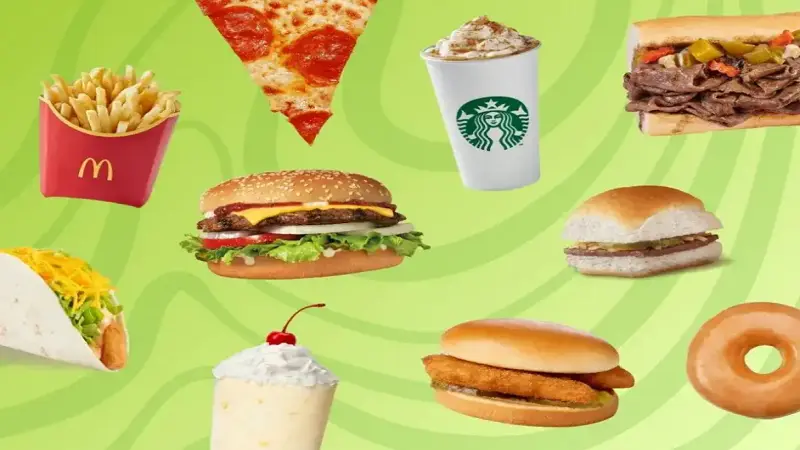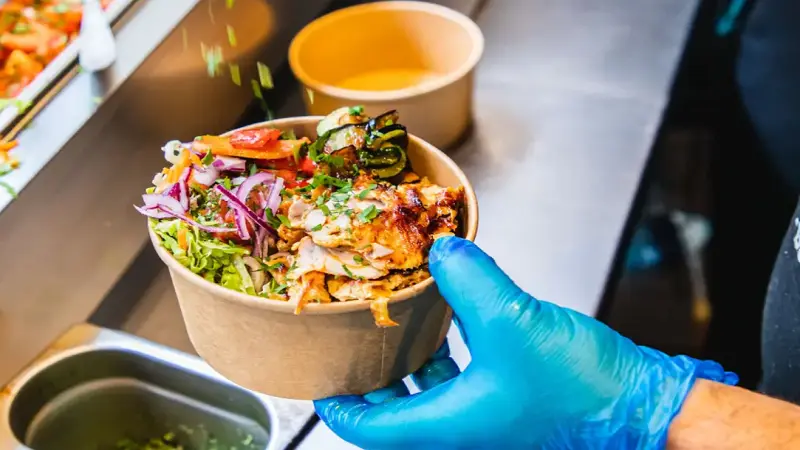
5 Emerging Fast Food Trends to Look for in 2024
As 2024 draws near, the fast food sector rapidly adapts to meet evolving consumer tastes and the latest technological developments. This vibrant industry is poised to launch new trends that will transform the landscape of quick-service dining. From enhanced sustainability initiatives to technology-enhanced services, here are the top five fast-food trends to monitor in the upcoming year. Let’s explore the emerging trends and identify which ones might diminish.
Emerging Food Trends
-
Focus on Sustainability
In a world where environmental awareness is increasing, fast-food chains prioritize sustainability to stay relevant and attractive to consumers. This includes implementing digital menus to reduce paper use, utilizing biodegradable packaging, and using energy-efficient appliances. These green strategies are environmentally beneficial and can lead to substantial cost reductions.
-
Growth of Plant-Based and Vegan Choices
According to Polaris Market Research, the global market for plant-based “meat” products is expected to soar from around $12 billion in 2019 to over $30 billion by 2026. This surge reflects a shift towards diets that exclude animal products, promoting wellness and sustainability. Fast food restaurants are expanding their menus to include appealing vegan and vegetarian options like plant-based cheeses, mushroom-based snacks, alternative milk, and various legume-based patties.
-
Healthier Versions of Classic Favorites
There’s an increasing demand for healthier alternatives to traditional fast food items. Modifications like adopting healthier cooking oils, offering alternative cheese options, and using organic produce are becoming more common. These healthier choices help align popular fast food dishes with consumers’ health and dietary preferences.
According to Toast, the fast food sector brought in $399.2 billion in revenue in 2023 and is adapting to the growing demand for healthier choices. This change in consumer preferences is driving fast food chains to innovate, resulting in a new wave of menu items designed to satisfy both the desire for convenience and a focus on health.
-
Integration of Advanced Technology

Technological innovations are reshaping customer interactions and streamlining kitchen operations in fast food outlets. Adopting self-service kiosks, digital ordering platforms, and efficient kitchen display systems enhances service speed and accuracy. These technological solutions boost operational efficiency and address staffing shortages while improving customer experience.
-
Improved Online and Mobile Ordering Capabilities
With digital convenience now a norm, fast food chains are enhancing their online and mobile ordering processes. Features that allow customers to save favorite orders, receive personalized deals, and select convenient pickup options are redefining fast food accessibility and customization.
Food Trends That Will Fade
-
Secret Menus
As the popularity of social media platforms increases, the allure of secret menu items diminishes. Details about these hidden offerings at places like McDonald’s or Starbucks are now easily accessible online, making them less secretive. This exposure may lead chains to either eliminate these items or incorporate them into their regular menus. Furthermore, inaccuracies in viral secret menu items can cause confusion and disappointment at the counter, underscoring the importance of verifying such details through trusted sources.
-
Classic Fast Food Burgers
While traditional fast food burgers continue to be a menu staple, their exclusive dominance is fading as more consumers opt for healthier eating habits, which include a range of meat alternatives. Moreover, many restaurants are broadening their protein selections to include chicken, fish, and pork, positioning the classic burger as just one option among many. Only distinctive or iconic burgers are expected to maintain their status.
-
The All-Day Breakfast Craze

The trend of offering breakfast all day at fast food chains is waning. Major chains like McDonald’s have discontinued their all-day breakfast services to streamline operations, with no plans for reinstatement. The reduction is mainly due to operational difficulties and staff shortages. It remains to be seen whether chains like Wendy’s will adjust their offerings to bring back all-day breakfast items.
-
Super-Sized Desserts
The trend of enjoying overly large desserts is declining as health consciousness rises. Moving away from sugar-heavy options to more appropriately sized desserts mirrors a larger trend towards healthier eating habits. Customers now prefer sharing smaller portions instead of choosing among vast, calorie-rich desserts.
-
High-sodium and High-Calorie Menus
As awareness of health issues grows, there is an increasing demand for meals with lower sodium and calorie content. This demand is prompting fast food outlets to reevaluate and modify their recipes. Menus laden with high-sodium and high-calorie dishes are becoming less appealing to health-focused diners. The industry is moving towards offering more nutritious and balanced meals that meet dietary needs without sacrificing flavor.
Conclusion
Looking ahead to 2024, the fast food industry is ready to embrace innovative trends driven by sustainability, health consciousness, and technological advancements. These shifts mirror broader societal changes and suggest a significant evolution in how fast food integrates into our everyday lives. Whether you are a consumer or a business insider, these trends provide insight into the future trajectory of fast-food dining.
FAQs
-
What is driving the shift towards sustainability in fast food restaurants?
The move towards sustainability is spurred by increasing consumer awareness of environmental issues and a growing demand for eco-friendly business practices. Fast food restaurants are adopting measures like using biodegradable packaging, locally sourced ingredients, and minimizing waste to attract environmentally conscious consumers and reduce operational costs.
-
Why are plant-based and vegan options becoming more prevalent on fast food menus?
The increase in plant-based and vegan menu options is largely driven by the rising number of individuals adopting vegetarian, vegan, or flexitarian diets, motivated by health, ethical, and environmental factors. Advances in food technology have also made plant-based alternatives tastier and more accessible, encouraging fast-food chains to expand these offerings to meet consumer demand.
-
How are technological innovations affecting fast food service?
Technological advancements like self-service kiosks, digital ordering platforms, and kitchen display systems are streamlining operations, enhancing order accuracy, and improving customer service. These technologies shorten wait times, reduce errors, and facilitate more personalized service, which is highly valued by customers.
-
What factors are contributing to the decline of all-day breakfast offerings in fast food chains?
The decrease in all-day breakfast services is attributed to operational challenges, including staffing shortages and the complexity of maintaining extensive menu offerings throughout the day. Some chains have also scaled back these options to simplify operations and concentrate on core menu items that are more profitable and manageable.
-
Are super-sized desserts completely disappearing from fast food menus?
While not entirely vanishing, there is a noticeable shift towards smaller, portion-controlled dessert options in fast food chains. This trend aligns with broader health and wellness movements, as consumers increasingly choose treats that satisfy their cravings without excessive calorie intake. Fast-food restaurants are responding by offering smaller desserts and providing nutritional information to cater to health-conscious customers.
For more: kibho.co.uk